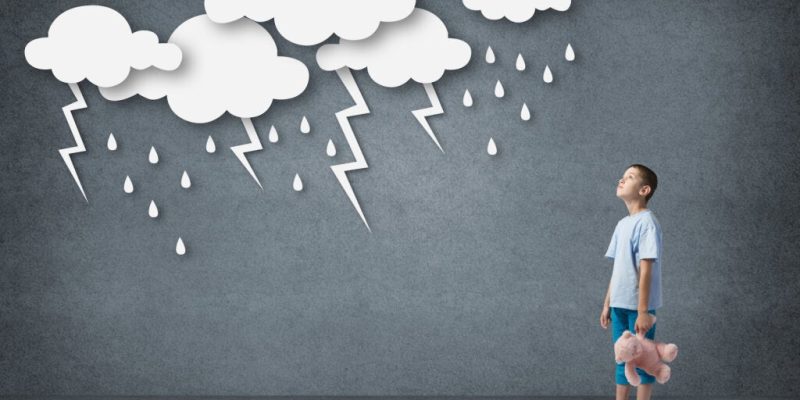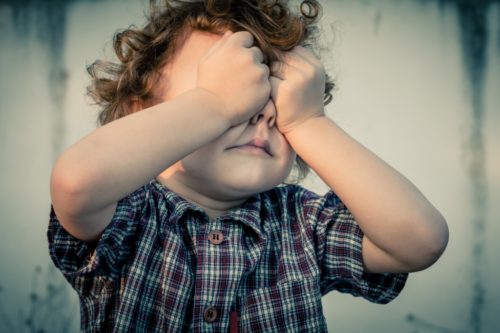Emotions play a central role in anxiety disorders and mood disorders. However, it’s common to find both clinical entities grouped under the umbrella term of emotional disorders. This idea is partly supported by attempts to find a common explanatory model. It’s how transdiagnostic treatments or transdiagnostic interventions are born. One such intervention is the EMOTION program.
If we were to add up all the clinical entities that appear in the different classification systems of anxiety and mood disorders, we’d end up with a figure close to 400. Unsurprisingly, such a wide range represents serious difficulties when it comes to establishing their etiology, validity, and reliability.
That said, we know that there are specific treatments for certain disorders, such as depression, that also reduce the symptoms of others, like anxiety disorders.
Transdiagnosis
When an individual suffers from depression and anxiety at the same time it’s known as comorbidity. Behind the phenomenon, lies a specific factor that explains its occurrence.
This is the thesis of transdiagnosis. It maintains that different disorders have specific mechanisms in common. For instance, this is often the case in anxiety and mood disorders.
Cognitive biases: a transdiagnostic mechanism
One of the mechanisms that can explain the origin and persistence of emotional disorders is cognitive biases. They constitute distorted ways of processing information. According to Fonseca (2021):
- People with anxiety have more cognitive biases. They also focus more of their attention on threatening stimuli.
- The various anxiety disorders are differentiated by cognitive bias and the type of threat. For example, in generalized anxiety disorder, the individual concentrates on future worries. On the other hand, OCD sufferers focus on intrusive thoughts and panic about feelings of anxiety.
- Cognitive distortions that focus on loss are risk factors for depression. Memory biases and causality attributions also occur in depression.
When faced with a stressful stimulus and under circumstances of vulnerability, anxious individuals make an interpretation of the threat. For instance, they either think that it’s going to attack them or that they’ll be left alone. This can trigger normal emotional reactions of anxiety or sadness.
Cognitive biases are linked with the way we attend to, interpret, and deal with these reactions, at the same time as implementing emotional regulation strategies.
“The role played by cognitive distortions is key to the appearance of emotional disorders in childhood and adolescence.”
– Muris –
Emotional regulation
According to Nolen-Hoeksema, “Emotional regulation consists of the processes that people develop to modulate their emotions and thus respond to environmental demands”. There are four major emotional regulation strategies: rumination, suppression, deactivation, and avoidance. But, how are they related to childhood anxiety disorders and depression?
- Rumination and avoidance are frequent. They’re recurrent precipitants of anxious and depressive symptoms.
- Significant clinical pictures, such as depression or anxiety disorders favor coping strategies. For instance, rumination or avoidance.
The administration of cognitive-behavioral therapy to treat anxiety symptoms in childhood also exerts a protective effect against the appearance of depression in adolescence.
EMOTION: a program for children with anxiety and depression
The EMOTION program is a form of intensive treatment in 20 group sessions. It’s intended for children between the ages of eight and 13 who present symptoms of anxiety and/or depression. Two sessions take place a week. They last between 45 and 60 minutes.
The goal is for children to acquire a wide range of skills, even if they miss a session. The therapy is carried out in the school context. However, parents also play an important role and join in with some sessions.
In the EMOTION program, all sessions begin with a dialogue around the positive events that have occurred since the last meeting. The therapy is divided into two large blocks of ten sessions.
The first ten sessions
In the first ten sessions, children learn skills to manage their symptoms of anxiety and depression:
Session One. It seeks to promote the cohesion of the group (approximately six children)through various dynamics. The therapist defines the rules and points out the importance of doing homework. They begin by using the metaphor of emotional sunglasses.
“The metaphor of sunglasses allows us to understand how negative feelings can modify the interpretations we make in different situations.”
-Fonseca-
- In session two, with the metaphor of the three c’s (catching, checking, and changing) the therapist explains how thoughts, emotions, and actions are related to each other. They use a feelings thermometer. With this, the children assign a value to the emotions they’re feeling, based on their intensity. For example, 0 would be ‘no intensity in the emotion’ while five would be ‘extremely strong’.
- In session three, the therapist presents the metaphor of the emotional detective. The goal is for children to be able to detect the links between the physical sensations they’re experiencing and their emotions and behaviors.
- In session four, the child establishes specific and personalized goals.
- Sessions five, seven, eight, and nine focus on the development of problem-solving skills and strategies. The children carry this out with specific examples that they work on in the group.
- Session six focuses on cognitive restructuring. The children carry this out by connecting their thoughts and feelings.
- In session ten, the child establishes specific and personalized objectives.
By the use of metaphors, children are able to better understand the content of the therapy sessions.

The last ten sessions
In the final sessions (from 11 to 20), children carry out cognitive restructuring and exposition exercises. These are focused on the set of specific problems that each child manifests. Finally, in the twelfth session, the therapist introduces the last metaphor: the garbage monster.
They use the garbage monster metaphor as an analogy for negative self-talk. With this, children can adopt a more distant perspective of the problem. In effect, they exteriorize their negative thoughts, encompass them, and give them the appearance of a monster. At the same time, this makes it possible for the child to debate and question them. In addition, to improve their states of mind, they carry out behavioral activation exercises.
Without a doubt, the EMOTION program is promising. Indeed, after carrying out an intervention of this type, significant reductions in the symptoms that have been classically associated with anxiety and depression have been found.
The post EMOTION: A Program for Children With Anxiety and Depression appeared first on Exploring your mind.



















Comments